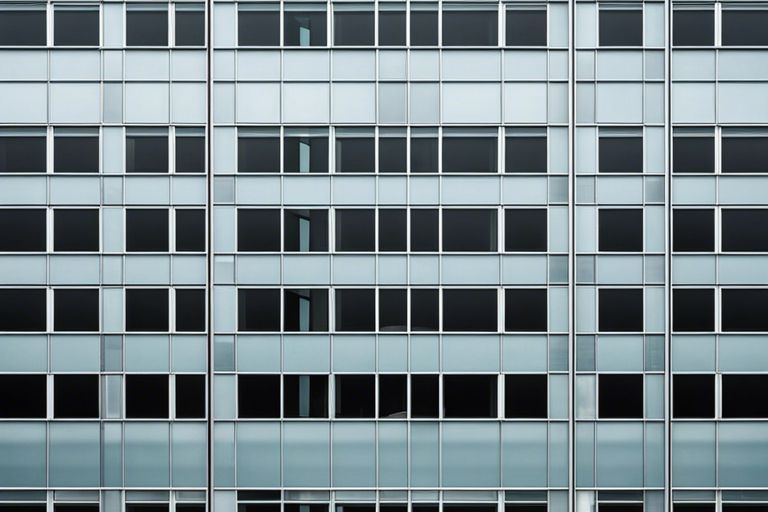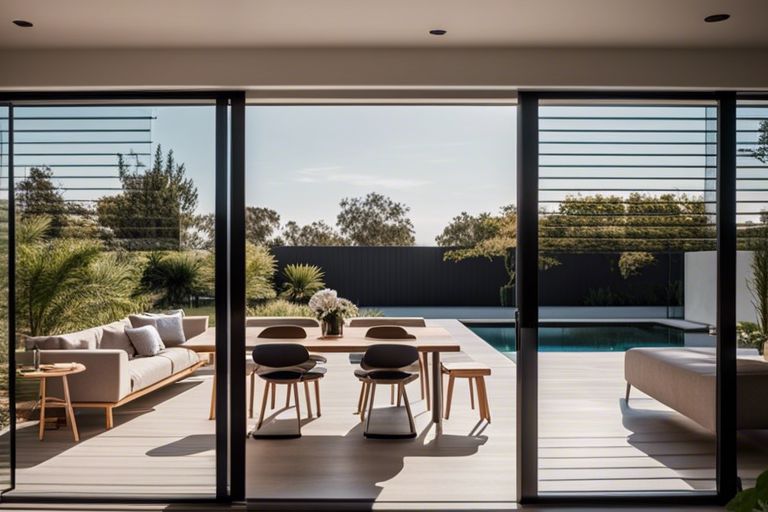As an enthusiast of green building and sustainable architecture, you understand the significance of choosing materials that are not only durable and efficient but also environmentally friendly. When it comes to construction, the use of aluminium has gained notable attention for its versatility, recyclability, and energy-saving properties. In this guide, you will learn about the various ways in which aluminium plays a pivotal role in reducing carbon footprint, enhancing energy efficiency, and promoting sustainable design in the construction industry. Join us as we explore the unparalleled benefits of incorporating aluminium into your next green building project.
Key Takeaways:
- Aluminium is a versatile, sustainable material: It is lightweight, strong, and resistant to corrosion, making it an ideal choice for green building and sustainable architecture projects.
- Aluminium is recyclable: Nearly 75% of all aluminium ever produced is still in use today, highlighting its potential for circular economy principles in construction.
- Aluminium can contribute to energy efficiency: Its reflective properties can help reduce the need for artificial lighting and cooling, leading to lower energy consumption in buildings.
- Aluminium can be used in innovative design solutions: Its malleability and ability to be shaped into various forms allow for creative and sustainable architectural designs.
- Aluminium has a low environmental impact: Its production emits less greenhouse gases compared to other metals, and its long lifespan reduces the need for frequent replacements.
- Aluminium can be integrated into green building certifications: Many green building standards, such as LEED and BREEAM, recognize the positive impact of using aluminium in sustainable construction.
- Aluminium offers long-term cost savings: While the initial investment may be higher, the durability and low maintenance requirements of aluminium can result in significant cost savings over the lifespan of a building.
Types of Aluminium Used in Green Building
Now, let’s look at the various types of aluminium that are commonly used in green building and sustainable architecture. Below, you’ll find a breakdown of the different types and their specific applications.
| Type | Application |
|---|---|
| Aluminum Strip | Used for decorative trim, roofing, and flashing applications |
| Aluminum Sheet | Commonly used for roofing, siding, and curtain wall systems |
| Aluminum Extrusions | Utilized for window and door frames, as well as structural support systems |
| Aluminum Composite Panels | Widely used for cladding and facades, providing insulation and aesthetic appeal |
| Aluminum Castings | Found in structural components and decorative elements within architectural designs |
Recognizing the importance of Aluminum Strip in Sustainable Architecture: Green Building Materials, it’s clear that each type plays a crucial role in creating energy-efficient and sustainable structures.
Recycled Aluminium
In green building, the use of recycled aluminium is pivotal in reducing environmental impact. By utilizing recycled aluminium, you can significantly lower energy consumption and carbon emissionsbuilding projects is not only a sustainable choice, but it also helps to reduce waste and conserve natural resources.
Aluminium Alloys and Their Green Credentials
When it comes to aluminium alloys, it’s important to consider their green credentials. Many aluminium alloys are designed to enhance strength and durability, while still maintaining environmental sustainability. By choosing the right aluminium alloy for your building project, you can ensure that your structure meets green building standards and contributes to a healthier and more sustainable environment.
Factors Influencing Aluminium Use in Sustainable Architecture
Clearly, there are several factors that influence the use of aluminium in sustainable architecture. These include:
- Energy Efficiency and Insulation Properties
- Durability and Longevity
- Lifecycle and Recycling Potential
Perceiving the role of these factors can help you understand why aluminium is a preferred material in sustainable architecture.
Energy Efficiency and Insulation Properties
When it comes to sustainable architecture, the energy efficiency and insulation properties of materials play a crucial role in minimizing heat loss and reducing the overall energy consumption of a building. Aluminium excels in this aspect, as it can effectively reflect heat and light, helping to maintain a comfortable indoor environment while reducing the need for artificial heating and cooling systems.
Durability and Longevity
Another important factor influencing the use of aluminium in sustainable architecture is its durability and longevity. Aluminium is highly resistant to corrosion and can withstand harsh weather conditions, ensuring that the building remains structurally sound for many years. This reduces the need for frequent maintenance and replacement, making it a sustainable choice for architectural applications.
Lifecycle and Recycling Potential
One of the most significant aspects of aluminium is its lifecycle and recycling potential. Aluminium is a fully recyclable material, which means that it can be reused repeatedly without losing its quality. This significantly reduces the environmental impact of construction projects, as it minimizes waste and the need for primary aluminium production, which is an energy-intensive process.
Step-by-Step Implementation
Your implementation of aluminium in green building and sustainable architecture can be broken down into the following steps:
| Step 1: Conduct a sustainability assessment of your project, identifying areas where aluminium can be used to enhance energy efficiency and reduce environmental impact. | Step 2: Collaborate with architects, engineers, and aluminium suppliers to explore design possibilities and material options that align with your sustainable objectives. |
| Step 3: Incorporate aluminium into the design and construction process, ensuring that it meets relevant green building standards and regulations. | Step 4: Implement sustainable practices throughout the lifecycle of the building, including maintenance, refurbishment, and recyclability of aluminum materials. |
Designing with Aluminium: Tips for Architects and Builders
When incorporating aluminium into your designs, it is essential to consider its versatility, durability, and recyclability. Use aluminium for structural elements, cladding, roofing, and fenestration to maximize its potential in achieving sustainable outcomes. Collaborate with aluminium suppliers and manufacturers to explore customized solutions that meet your specific project requirements. Recognizing the potential for innovative designs with aluminium can lead to remarkable sustainable architecture.
- Versatility: Explore the various applications of aluminium in building design, such as curtain walls, window frames, and roofing systems.
- Durability: Utilize the long-lasting properties of aluminium to ensure the longevity of your sustainable construction.
- Recyclability: Design with materials that can be easily reused and recycled to minimize environmental impact.
Integrating Aluminium with Other Sustainable Materials
Integrating aluminium with other sustainable materials, such as wood, glass, and recycled plastics, can enhance the overall sustainability of your project. Consider hybrid solutions that combine the benefits of different materials to achieve optimal environmental performance. By combining aluminium with sustainable materials, you can create innovative and eco-friendly architectural solutions that contribute to a more sustainable built environment.
Pros and Cons of Aluminium in Sustainable Architecture
Despite its popularity and widespread use in sustainable architecture, aluminium comes with its own set of pros and cons. It’s important to weigh these factors before incorporating aluminium into your green building design.
| Pros | Cons |
| 1. Lightweight and durable | 1. High energy consumption in production |
| 2. Recyclable material | 2. Potential for corrosion |
| 3. Low maintenance | 3. High cost |
| 4. Flexibility in design | 4. Limited insulation properties |
| 5. Resistant to fire and weather conditions | 5. Environmental concerns with mining |
Advantages of Aluminium for Eco-Friendly Construction
When it comes to eco-friendly construction, aluminium offers several advantages. Its lightweight and durable nature make it an ideal choice for sustainable architecture. Additionally, the recyclable properties of aluminium make it a sustainable option, reducing the environmental impact of construction materials. These characteristics allow for long-term energy and cost savings, making it an attractive choice for green building projects.
Limitations and Design Considerations
Despite its advantages, there are limitations and design considerations to keep in mind when using aluminium in sustainable architecture. The high energy consumption in the production process and potential for corrosion are important factors to consider. Additionally, the high initial cost and limited insulation properties may impact your design choices. It’s crucial to carefully weigh the pros and cons when incorporating aluminium into your sustainable architecture and consider alternative materials where appropriate.
The Role of Aluminium in Green Building and Sustainable Architecture
Q: What are the benefits of using aluminium in green building and sustainable architecture?
A: Aluminium is a lightweight, strong, and durable material that is highly recyclable, making it an excellent choice for sustainable construction. It requires minimal maintenance and has a long lifespan, contributing to the overall sustainability of a building.
Q: How does aluminium contribute to energy efficiency in buildings?
A: Aluminium is a highly conductive material, allowing for the efficient transfer of heat and cold. This property can be leveraged to improve the energy efficiency of a building by optimizing insulation and HVAC systems. Additionally, aluminium’s reflective surface can help reduce the need for artificial lighting and cooling, further reducing energy consumption.
Q: Is aluminium environmentally friendly?
A: Yes, aluminium is considered environmentally friendly due to its high recyclability. In fact, nearly 75% of all aluminium ever produced is still in use today. The recycling process also requires significantly less energy compared to primary production, making it a sustainable choice for building materials.
Q: What are the common applications of aluminium in green building and sustainable architecture?
A: Aluminium is widely used in the construction of facades, windows, doors, roofing, and cladding systems. Its versatility and adaptability make it a popular choice for both structural and aesthetic elements in sustainable buildings.
Q: How does the use of aluminium contribute to overall sustainable design?
A: Aluminium’s light weight and strength-to-weight ratio can help reduce the overall mass of a building, resulting in less material usage and lower transportation emissions. Additionally, its durability and low maintenance requirements contribute to the long-term sustainability of a structure.
Q: Are there any downsides to using aluminium in green building and sustainable architecture?
A: While aluminium is an excellent choice for sustainable construction, its production does require a significant amount of energy. However, this can be mitigated by using recycled aluminium whenever possible and optimizing the production process to minimize environmental impact.
Q: How can stakeholders ensure the responsible use of aluminium in sustainable construction projects?
A: Stakeholders can prioritize the use of recycled aluminium, work with suppliers that adhere to sustainable practices, and incorporate life cycle assessments to evaluate the environmental impact of aluminium use in building projects. Additionally, proper disposal and recycling of aluminium materials at the end of their life cycle is crucial for maintaining sustainability.






